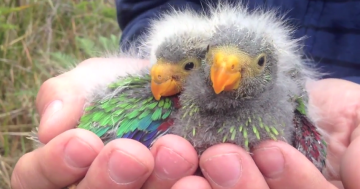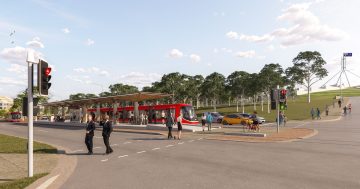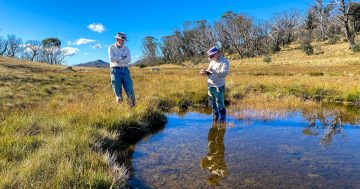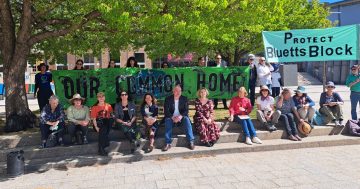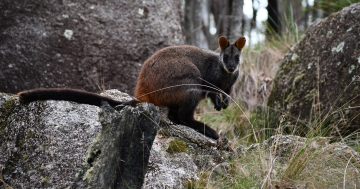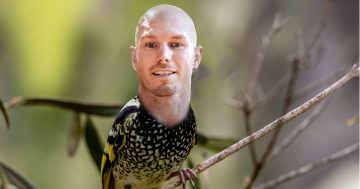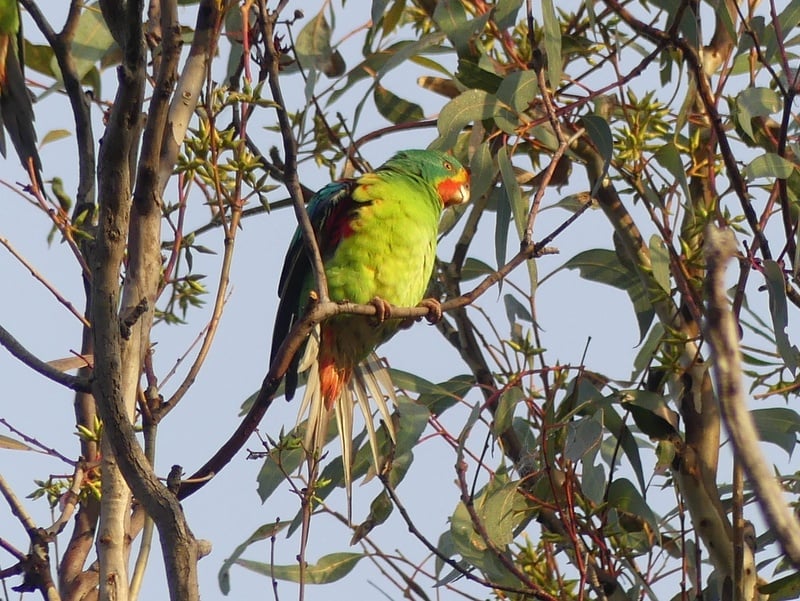
A swift parrot at home among the gum trees of Canberra this week. Photo: Ian Fraser.
The appearance of a pandemonium (or flock) of more than 50 swift parrots in the ACT while on a migratory run north from its breeding ground in Tasmania has highlighted the plight of the critically endangered bird.
Canberra’s own cohort of ornithologists has also flocked to see the small, brightly coloured birds that feed on nectar from flowering eucalypts in autumn.
However, according to researchers from the Australian National University, there are fewer than 300 swift parrots left in the wild, which also prompted the ACT’s Environment Minister Rebecca Vassarotti to put pressure on the Federal Government to take immediate steps to protect their habitat from logging.
“While the sight of 50 of these beautiful parrots in Canberra is a welcome one, the reason they are here tells a story of national environmental devastation that needs to be reversed urgently,” Ms Vassarotti said.
“Outside the ACT, their habitat is under attack, with their breeding grounds in south-east Tasmania and important winter habitat on the NSW south coast both being logged.”
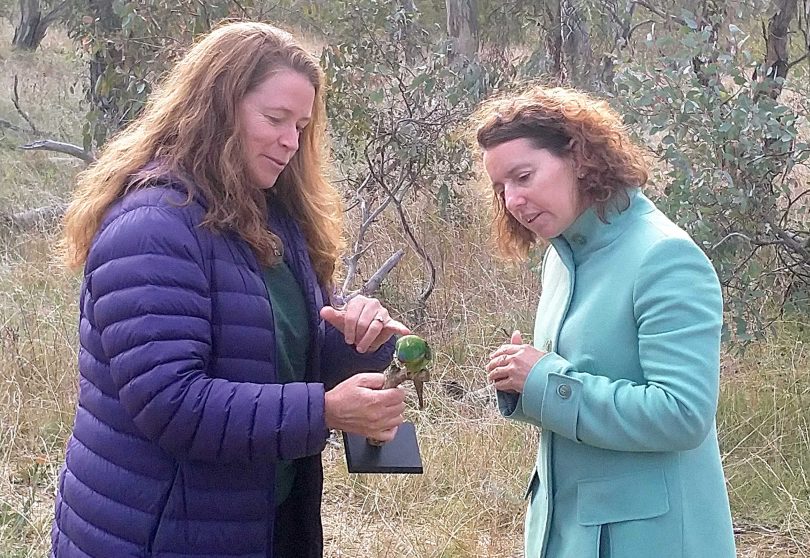
Conservation ecologist at the ANU Dr Debbie Saunders shows Environment Minister Rebecca Vassarotti some features of the swift parrot. Photo: Michael Weaver.
Conservation ecologist at the ANU Dr Debbie Saunders said swift parrots forage in big, older trees with natural hollows and have had to travel further between breeding seasons.
“The logging of mature habitat reduces both the availability and quality of food resources for swift parrots. This increases pressure on the population to travel further for less food, reducing their overall fitness and ability to return in good condition to their breeding areas,” Dr Saunders said.
“Unless decisive action is taken to stop the destruction of their habitat, swift parrots face extinction within 10 to 15 years. Every piece of its habitat is now precious. The review of the EPBC Act (Environment Protection and Biodiversity Conservation Act) is a crucial moment to strengthen protection for swift parrots so they never cease to amaze us.”
Naturalist and Region Media columnist Ian Fraser said about 75 swift parrots were observed at the Callum Brae Nature Reserve at Symonston, while flocks of the birds have been spotted at Tuggeranong Homestead and other locations such as Mt Ainslie during the past three weeks.
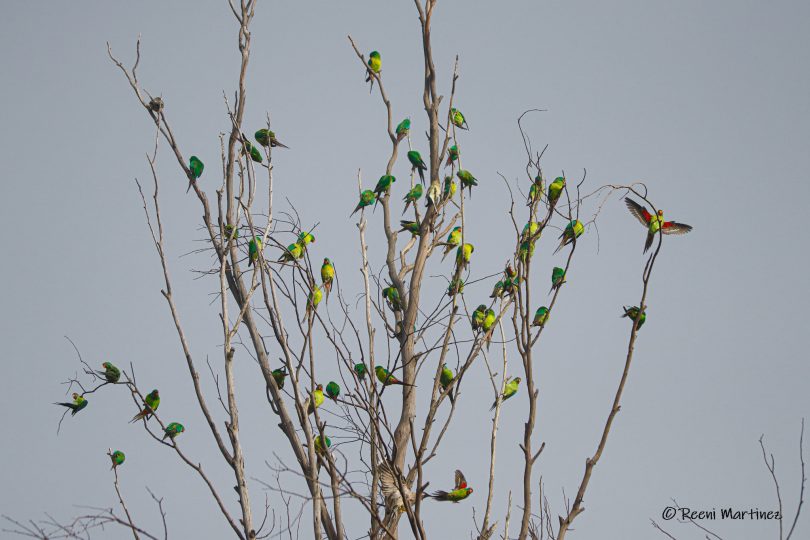
A pandemonium of swift parrots enjoying the surround of the Tuggeranong Homestead earlier this week. Photo: Reeni Martinez.
The swift parrots’ nomadic lifestyle makes them very difficult to study and protect, so Dr Saunders encouraged anyone who sees them to take video footage and provide it to the ANU.
Dr Saunders also said Canberrans could encourage the birds into their yards and open spaces by planting native flowering species, “but not near windows”, she said.
“A small number of trees can actually support a large portion of the population.
“The birds are definitely using the nature reserves here such as Mt Ainslie and trees such as the Mugga Ironbarks in the suburb which are all winter-flowering trees.
“The birds are coming to Canberra more often than they used to on their northward and southern migration because of changes to the climate.”
Ms Vassarotti said the ACT had taken proactive steps to conserve habitat for swift parrots and other woodland species.
“We are managing and conserving the most intact woodland in Australia, including the critically endangered Yellow Box and Blakely’s Red Gum Woodland,” she said.
However, Ms Vassarotti said logging represents the single biggest threat to the survival of the swift parrot in the wild.
“If there’s no change, the species is on a 10-year track to extinction.
“Graeme Samuel, who led a once-a-decade review of our national environment laws, has said the EPBC Act is failing to stem an extinction crisis.
“Logging is largely exempt from the EPBC Act under a series of regional forestry agreements between Federal Government and states.
“Scientists and conservation groups have said the forestry exemption is one of a series of failures in the design and implementation of the legislation that favours industry over the environment,” Ms Vassarotti said.












